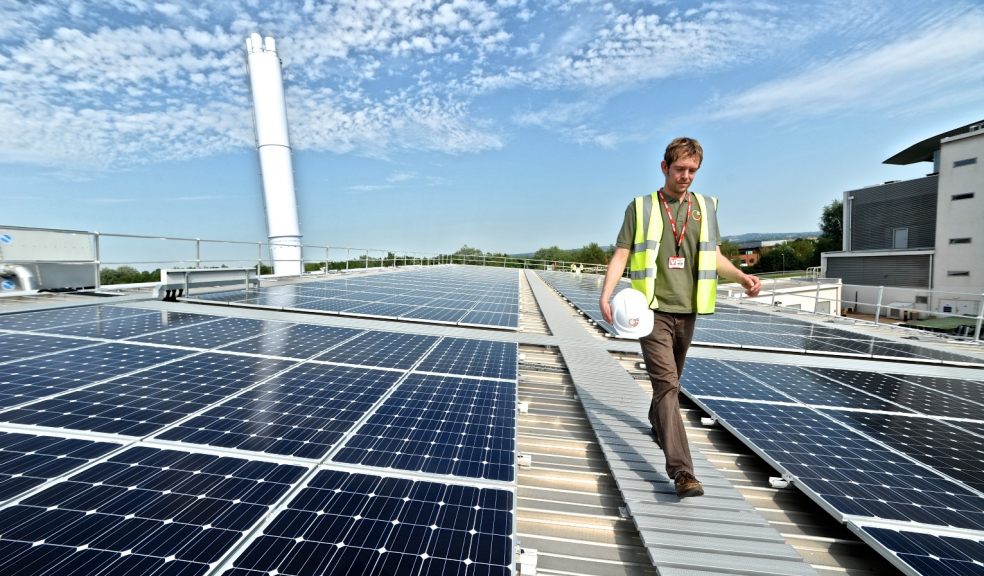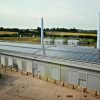
Bright outlook for Met Office solar system
Despite poor weather, Met Office solar PV has generated more than estimated in first year.
A year after a 250 kW solar PV array was installed at the Met Office HQ Exeter, and – despite some terrible weather over the past 12 months – the system has still out-performed initial estimations.
The sun may be in full view now (with the Met Office predicting below average rainfall and above average temperatures throughout July) but official statistics show that 2012 was one of the wettest years on record for the UK and June 2012 was the least sunny in records dating back to 1910. Despite this though, the Met Office’s solar PV array – designed and installed by Exeter-based SunGift Energy – still managed to generate a remarkable 221,854kWh (747 kWh more than estimated) of renewable electricity. That’s enough electricity to power more than 67 houses.
Peter Clayton-White, Building Services Engineer at the Met Office, said: “Since the array was installed in June last year we’ve seen six months of below average sunshine and one of the wettest summers on record, but the system has still provided more power than we expected – which is very encouraging looking to the future of this investment.”
The Met Office's vast solar PV array was completed by SunGift in June 2012 and generates around 1,000 kWhs of electricity per day – enough to meet the demand of one of the organisation's supercomputers.
“This is great news for anyone thinking of to opting for solar PV,” said Gareth Walton of SunGift Energy, “because if systems are exceeding estimates even in poor weather conditions – just think how well they’re currently performing while the country is basking in sunshine.”
“The Met Office’s solar system demonstrates how beneficial solar PV is for both non-domestic and domestic customers,” he added. “It has reduced their electricity bills, helping protect them from rising energy costs, generated a substantial income from the Feed-in Tariff, and cut their carbon emissions, boosting their green credentials.”
Solar PV systems can pay for themselves in as little as five years with a further 15 years of index-linked income from the Feed-in Tariff scheme and free electricity for 30-40 years.
In the year since installing the Met Office’s system, SunGift has installed more solar PV systems for both householders and businesses and other non-domestic customers, including Numatic International in Chard, which manufactures Henry vacuum cleaners, as well as Exeter City and Teignbridge District Councils. Demand for solar PV and other renewable energy technologies continues to be strong, with SunGift installing over 2 MW of systems in 2013 alone so far.
The specialist solar PV industry design software that SunGift uses to estimate how much electricity will be generated by the systems they install, including the Met Office’s, has been shown by both independent comparison tests and customer feedback not to over-estimate the output of a system. This is in contrast to some other methods that have been shown to over-estimate.
"While high estimates initially sound attractive, they can leave customers unhappy when their systems don’t perform as expected. SunGift deliberately choses a method that gives a realistic, but slightly conservative, estimate because we prefer to install systems that outperform estimates and leave our customers happy."
To find out more about the technologies used in the Met Office's solar PV system visit www.sungiftsolar.co.uk






















